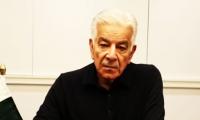As they say, ‘It doesn't matter where you start. It’s where you finish that does’. That is the life of a simple less known school teacher Nisar A Siddiqui (1944-2020) who we lost on June 22.
Many were devastated with the news of his death because they understood what was gone – the loss of leadership in the field of education in an area of the Sindh province where quality education is not available to the majority. Upper Sindh (northern Sindh) has been marked with tribal clashes, (dis) honour killings of women, and politics is still predominantly in the hands of a few landed families and tribal chiefs.
Nisar Siddiqui’s education movement created a new educated middle class, respect of merit, a future for those who did not inherit wealth. If the 21st century were to name people who were creators of an educated society, Nisar Sahib would definitely be among such individuals. His education success story is yet to be told across the country.
Nisar Siddiqui began his professional career as a school teacher. Later, after passing the civil service exams, he became like any other top bureaucrat from commissioner to provincial home secretary. During his time in government he used to teach in IBA and SZABIST in Karachi as part of the visiting faculty. Education remained his life-long passion, and as his life progressed he became an advocate for education.
Nisar’s passion for education led him to dedicate his life for change in the socio-economic structure of a society through education. The man we held in respect and who earned so much recognition was the vice chancellor of the Institute of Business Administration in Sukkur, established in 1994 as an affiliate with IBA Karachi, commonly known as IBA-Sukkur. When it began it did not have its own building, but Nisar Siddiqui transformed a small institute into a university (in 2017) that now has seven departments, two campuses, three community colleges and 40 schools.
Until the establishment of this university, students of Upper Sindh would go to the southern parts of the province for their education, mainly Hyderabad and Karachi. Some would even go to Lahore and Islamabad. The start of IBA reversed the trend, and one could see many students even from Punjab and Balochistan studying here because with higher standard quality education 78 percent students were on scholarships, largely funded by the Sindh government’s scholarship programme, USAID, some diaspora friends of IBA and local industry-provided funds.
A Karachi-based big businessman who owns a large factory in Sukkur was asked by Karachi-based universities to support their students. His reply was: ‘since I earn my living from Sukkur, the first right on my funding is theirs’. IBA Sukkur has over three thousand students, and the pleasant surprise is that 38 percent of those students are girls, who live in university-provided hostel accommodation.
Every dignitary on a visit to Sukkur would go visit IBA-Sukkur; in fact, an American ambassador to Pakistan during a visit to the university remarked that ‘even I did not have a chance to study in such a high-tech and modern educational infrastructure institute. Nisar Siddiqui knew the importance of what he was doing; he remained focused, and made every effort to manage financial resources to build this institute as a model. The institute now has university exchange and partnership programmes with many universities in Europe, China and the United States.
Hailing from a rural area, and seeing big companies in Pakistan would want to hire workforce from only a few big institutes, students from rural Sindh were left behind, and were not competing. Nisar Sahib’s goal was to produce a competent workforce from the rural areas of Sindh. This he did, producing 6,000 students on fully funded scholarships.
Nisar Sahib’s education movement is credited with three innovative ideas in education. First was the idea of a zero semester foundation programme for students who would not be able to sustain in the initial years of the institute; 54 percent students would drop out failing to maintain a 2.5 GPA, a requirement to maintain quality education. So the zero semester would teach them math, English and IT. The idea worked and drastically reduced the dropout rate to 13 percent from 54 percent. Under this programme, over 6,000 students have passed out on scholarships. Many of these students went to LUMS and IBA Karachi. Later seeing the success of the idea, the Higher Education Commission (HEC) appreciated the concept of a zero semester.
Due to the weak foundation of most students as well as many other considerations, only seven percent students in Pakistan avail higher education. Given this fact, Nisar Sahib introduced the concept of community colleges, borrowed from the United States and replicated in Sindh by customizing it to local needs. Sindh is the only province where currently 13 such colleges operate.
Former education minister Ahsan Iqbal was so inspired by the idea that he asked the HEC to include it in its Education Vision 2025. The HEC now has set a daunting target to open 125 community colleges in Pakistan. The HEC has already asked IBA Sukkur University to open up a community college in Mirpur Khas, and the government of Sindh wants them to open one in district Thatta.
Nisar Sahib’s educational movement is an outstanding story of our time in Pakistan’s education, starting from a two-room institute and transforming it into a Rs1.3 billion budgeted Sukkur IBA University, establishing links with seven universities in China and offering a Chinese language programme to produce workforce for CPEC related projects.
In the span of 15 years, IBA Sukkur has produced 91 PhD scholars, and roughly 73 PhD scholars are pursuing their doctoral degrees abroad.
The government of Pakistan awarded Nisar Sahib with the highest civilian award in recognition of his services. He was a humble man, who would not make his presence felt unless you talked to him. Every presentation he made would focus on ‘what more needs to be done and why it is important’.
He lit a series of candles to brighten up society, emancipate the poor people of his land, that he grew up with, witnessing the misery around him. He made a conscious choice, of a way forward of sustainable development, and transformation of a region for generations to come. That is the change a school teacher envisioned and worked towards it till he fell victim to Covid-19. The virus attacked his kidneys and caused a heart attack, killing him in one week.
Nisar Sahib will live on in our thoughts and in the lives of his students. We should include the lives of people like him in our school syllabus, teach our young students how some of us chose to be better than the rest, and that it is possible to have big dreams and make them come true.
Email: mush.rajpar@gmail.com
Twitter @mushrajpar
Most recently US presidential elections demonstrated how AI has amplified partisan split through turbocharged...
Few years ago, Pakistan ranked as fourth-largest freelancer market globally, with potential to become number one
Arts Council Karachi celebrated its 70th birth anniversary at inaugural session with big cake
There are over 11 million Pakistanis settled abroad, out of which around six million work in Gulf and Middle East
This year alone, US Treasury would have to roll-over $10 to $14 trillion in maturing short-term debt
Tear gas no longer marks just protest sites; it paints entire cities as battlegrounds but then again, PTI did it first







